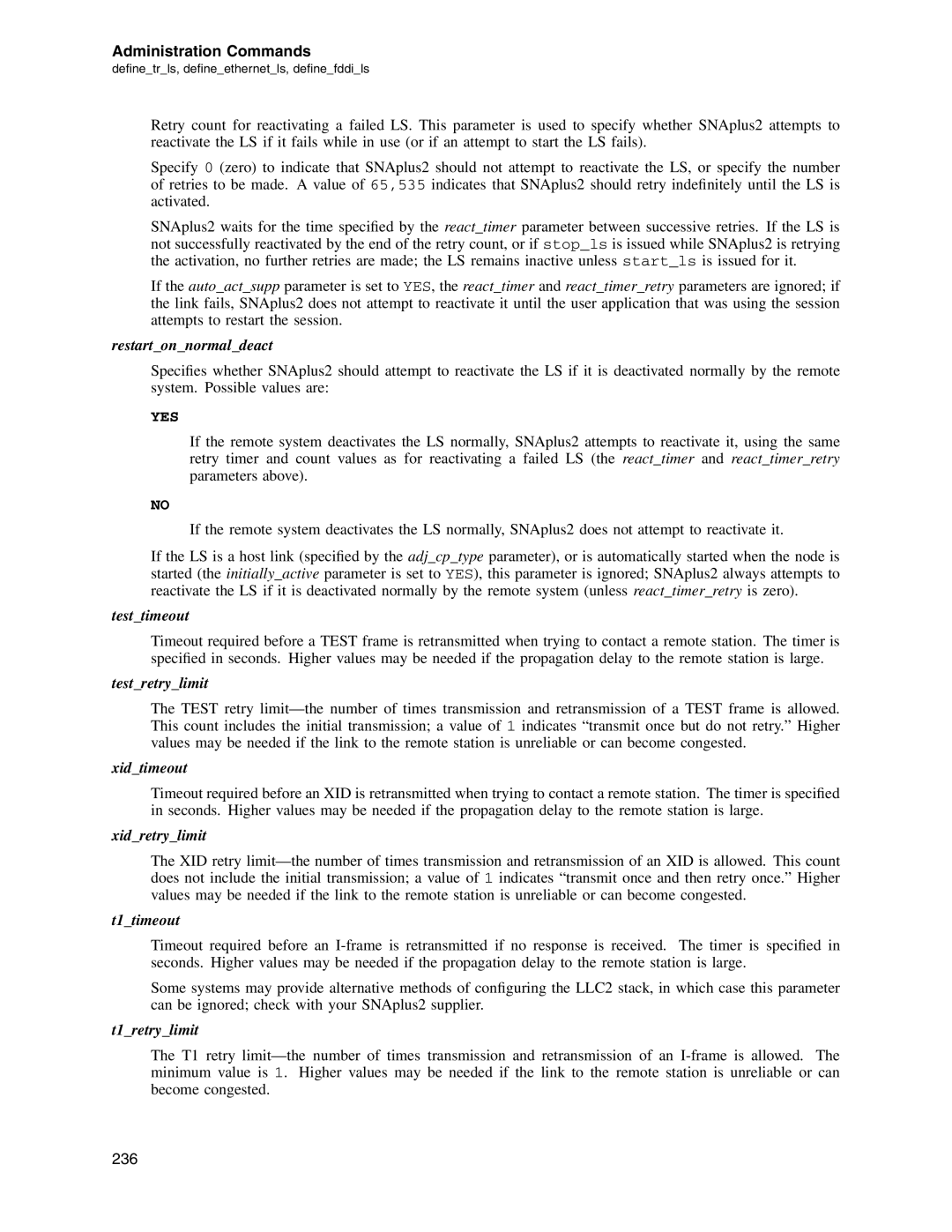Administration Commands
define_tr_ls, define_ethernet_ls, define_fddi_ls
Retry count for reactivating a failed LS. This parameter is used to specify whether SNAplus2 attempts to reactivate the LS if it fails while in use (or if an attempt to start the LS fails).
Specify 0 (zero) to indicate that SNAplus2 should not attempt to reactivate the LS, or specify the number of retries to be made. A value of 65,535 indicates that SNAplus2 should retry indefinitely until the LS is activated.
SNAplus2 waits for the time specified by the react_timer parameter between successive retries. If the LS is not successfully reactivated by the end of the retry count, or if stop_ls is issued while SNAplus2 is retrying the activation, no further retries are made; the LS remains inactive unless start_ls is issued for it.
If the auto_act_supp parameter is set to YES, the react_timer and react_timer_retry parameters are ignored; if the link fails, SNAplus2 does not attempt to reactivate it until the user application that was using the session attempts to restart the session.
restart_on_normal_deact
Specifies whether SNAplus2 should attempt to reactivate the LS if it is deactivated normally by the remote system. Possible values are:
YES
If the remote system deactivates the LS normally, SNAplus2 attempts to reactivate it, using the same retry timer and count values as for reactivating a failed LS (the react_timer and react_timer_retry parameters above).
NO
If the remote system deactivates the LS normally, SNAplus2 does not attempt to reactivate it.
If the LS is a host link (specified by the adj_cp_type parameter), or is automatically started when the node is started (the initially_active parameter is set to YES), this parameter is ignored; SNAplus2 always attempts to reactivate the LS if it is deactivated normally by the remote system (unless react_timer_retry is zero).
test_timeout
Timeout required before a TEST frame is retransmitted when trying to contact a remote station. The timer is specified in seconds. Higher values may be needed if the propagation delay to the remote station is large.
test_retry_limit
The TEST retry
xid_timeout
Timeout required before an XID is retransmitted when trying to contact a remote station. The timer is specified in seconds. Higher values may be needed if the propagation delay to the remote station is large.
xid_retry_limit
The XID retry
t1_timeout
Timeout required before an
Some systems may provide alternative methods of configuring the LLC2 stack, in which case this parameter can be ignored; check with your SNAplus2 supplier.
t1_retry_limit
The T1 retry
236
